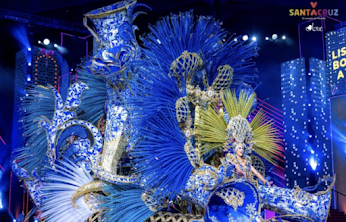El entierro de la Sardina - The end of Carnival season
Today, as well as being Ash Wednesday - Miércoles de Ceniza - in Spain we celebrate The burial of the Sardine - El entierro de la Sardina. But, what is this exactly, and why do we celebrate it on a day like today?
Well, it is important to mention that, for the last five days, Spanish people have been celebrating the festivity of Carnival. People dress up, dance, and take part in parades and fancy dress contests. El entierro de la Sardina marks the end of the festival and introduces Cuaresma or Lent.
Carnival in the Canary islands. Credit: Radio televisión Canaria
The burial of the Sardine consists in a parade where participants pretend to be sad and cry. They accompany a giant sardine generally made of cardboard and walk it around the area. At the end of the parade, the sardine is burnt. In some places, attendees can enjoy some fish that is cooked in the fire and there are bands playing some music.
Why do we celebrate El entierro de la Sardina?
There are several theories around this celebration, but let's talk about the most solid one. It is thought that in the 18th century, Charles III of Spain received a cargo of sardines that, by the time it arrived in Madrid, they were expired. Such was the fear of the sardines spreading diseases that they decided to bury them underground.
"To the city of Madrid the sardines arrived at so slowly that Carlos III and his people had to bury them".
Credits: madridsecreto.co
Although the madrileños - the people from Madrid - are the pioneers in this celebration, it quickly spread to other areas of Spain and South America. Here is a video of today's Entierro de Sardina in Valdepeñas, Ciudad Real.
Credits: ValdeRec noticias
The celebration of the Sardine through art
Francisco de Goya (1746-1828) was a Spanish painter who portrayed the celebration of the burial in one of his paintings. The piece called El entierro de la Sardina shows a group of people dancing and showing a flag with a Carnival mask on it. Although some say that the painting can't be related to a funeral as two women wear white dresses, the title leaves no doubt about it.







Very nice… I really like your blog. Very useful information.
ReplyDeleteThis post is very useful to us thanks for sharing.
ReplyDeleteGreat article,thank you very much for sharing this awesome post with us.
ReplyDelete